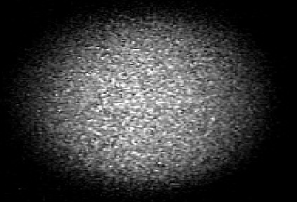Speckle Patterns and 2-Dimensional Spatial Models
Abstract
The result of 2-dimensional Gaussian lattice fit to a speckle intensity pattern based on a linear model that includes nearestneighbor interactions is presented. We also include a Monte Carlo simulation of the same spatial speckle pattern that takes the nearest-neighbor interactions into account. These nearestneighbor interactions lead to a spatial variance structure on the lattice. The resulting spatial pattern fluctuates in value from point to point in a manner characteristic of a stationary stochastic process. The value at a lattice point in the simulation is interpreted as an intensity level and the difference in values in neighboring cells produces a fluctuating intensity pattern on the lattice. Changing the size of the mesh changes the relative size of the speckles. Increasing the mesh size tends to average out the intensity in the direction of the mean of the stationary process.

This work is licensed under the Creative Commons Attribution-NonCommercial 4.0 International (CC BY-NC 4.0) license.








